New Features in Reunion 13

- The Change Log feature keeps track of the changes made to a family file, making it easy to see what's been changed (when and where, too!) and making it easy to navigate directly to the records and fields that have changed.

- Connections is a new feature that lets you connect people to other people whose role might be godfather, friend, witness, neighbor, executor, someone who was residing at the same address during a census, someone who was a servant in the household, etc. The connections aren't required to be related by blood or marriage. I.e., for the first time, Reunion can stretch beyond "familial" or "lineage linked" relationships. There are many possibilities, depending on the nature of your research.
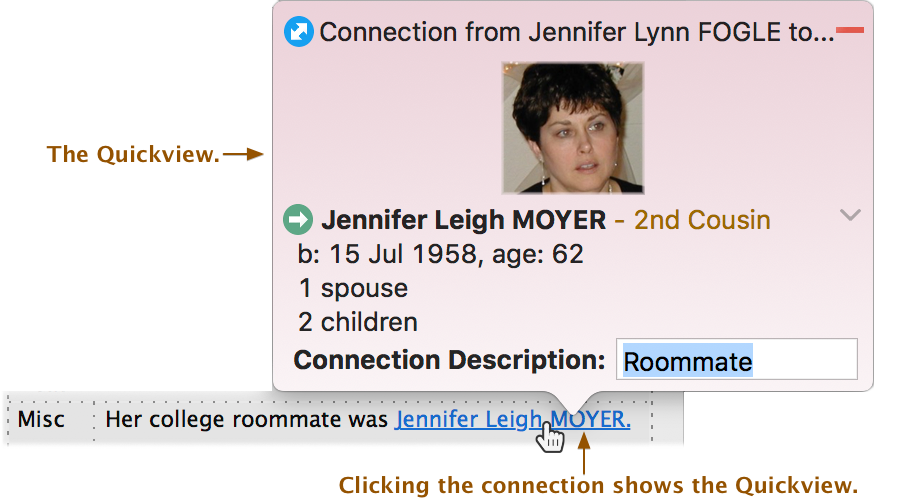
- Reunion 13 has a new easy-to-use, yet more powerful Find feature: one small search box that searches everywhere. It will find what you want without configuring anything, without leaving the family view, without changing sidebars. Just think of what/who you want to find, enter it in the search box, and Reunion brings the results to you, showing the records and fields where items are found.

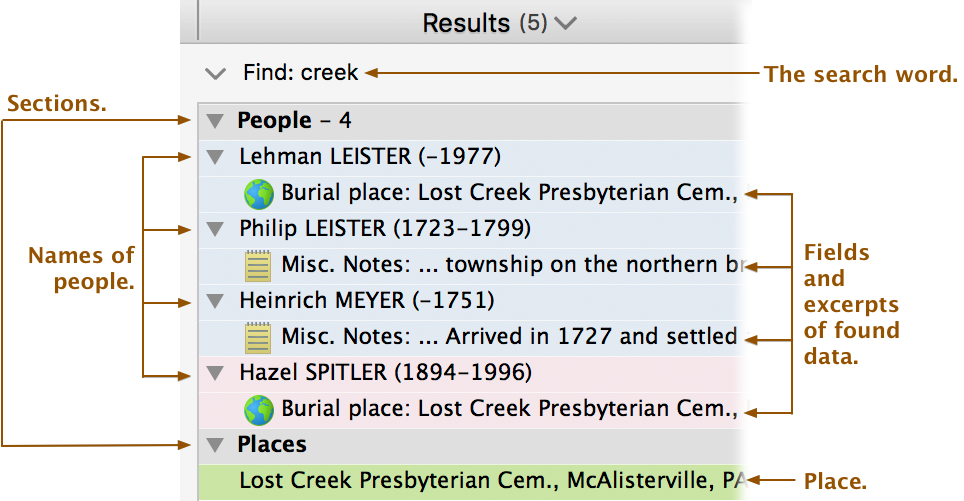
- The new Bowtie Chart begins with a couple in the center and then goes backward in time, moving to the left from the source husband, and to the right from the source wife (spreading out horizontally, so to speak). It resembles two ancestor charts sewn together, or mirroring each other (one left-to-right, and one right-to-left). It includes up to 12 generations in both directions.
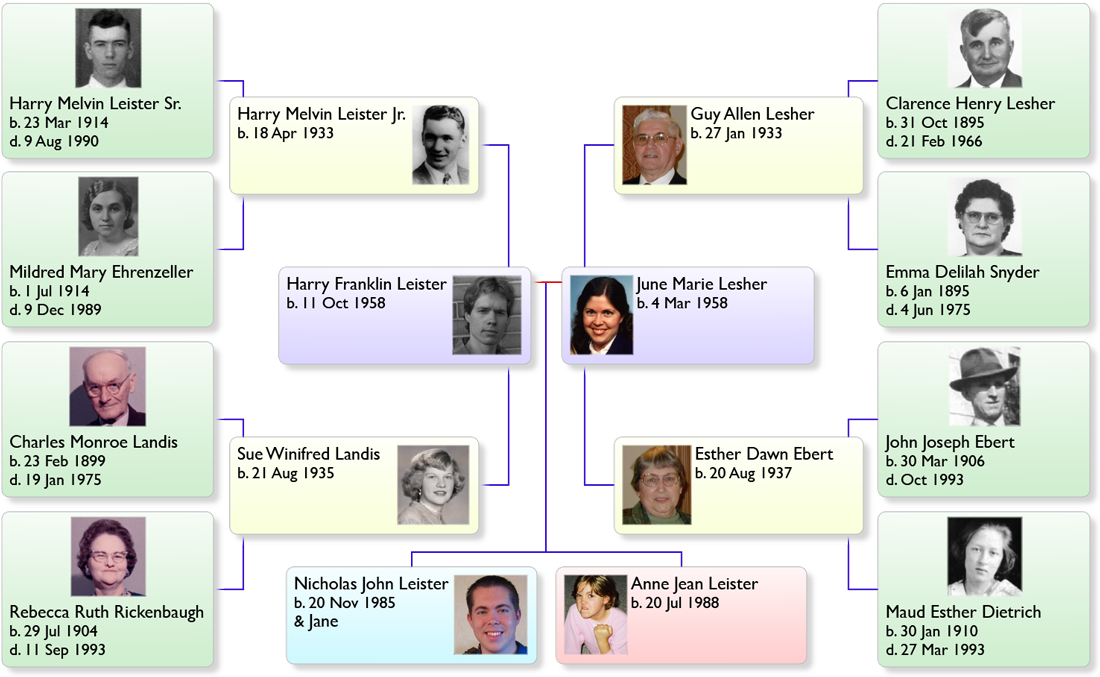
- The new Summary Sidebar shows various personal statistics along with the ability to drill down for more detail, exploration, or navigation. As you navigate in your family file, it instantly shows items such as: the number of ancestors of a person, the number of descendants of a person; a list of descendants grouped by relationship; surnames of a person's ancestors; names of half-siblings, etc. It is customizable so you can see what's important to you.

- The Quickview is a new window that provides a quick, concise display of information about a person, couple, source record, or surname. It appears in several places, including most lists, providing more detail about somebody without having to navigate to another record.
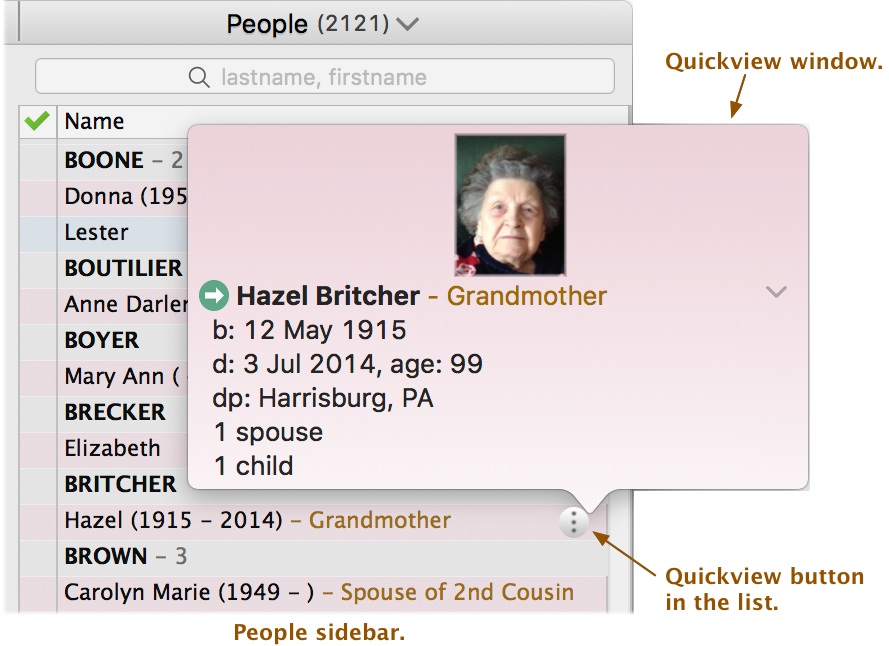
- The old feature "Find Relationship between two people" has been renamed to "Find Relationship" and it has been improved to instantly show a graphic relationship tree and the relationship.
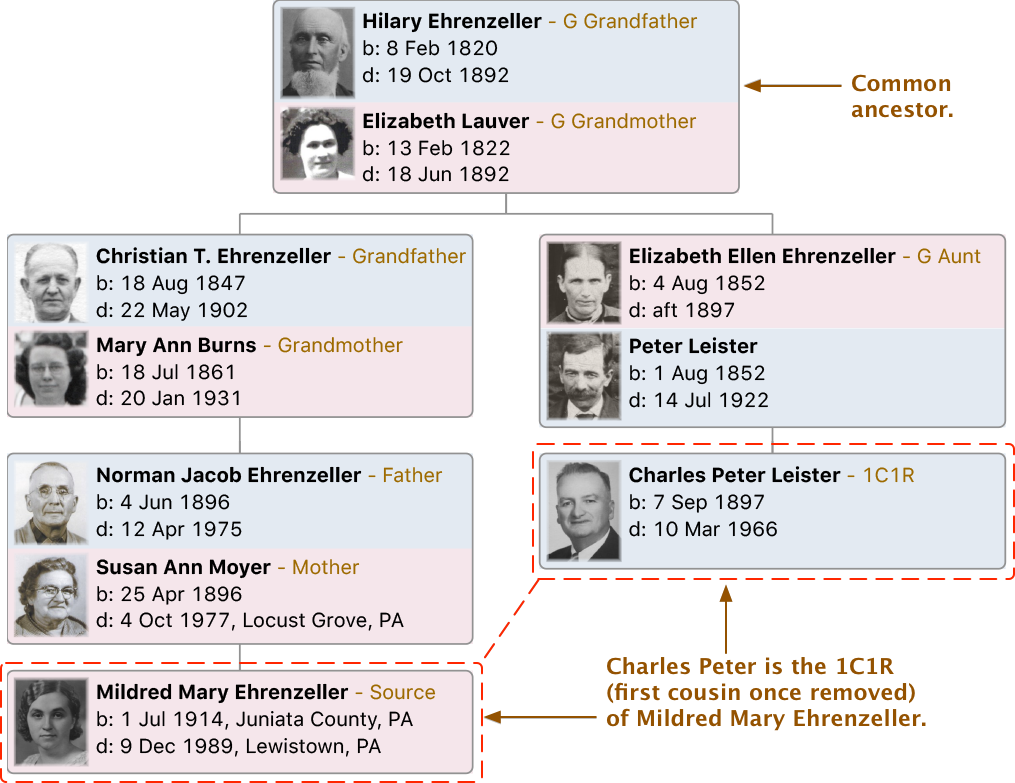
- Color Tags have a dedicated sidebar, with new enhancements.

- The resolution of images in books has been improved dramatically.
- The new Surname Tracer shows a list of surnames of a person's ancestors, surnames of a person's descendants, and surname variations based on the earliest paternal ancestor of a person.

- New option to use a comma or a semicolon between fields of source records.
- Reunion will now search in branches. You can search for something and limit the search to just a particular branch (like maternal ancestors, or descendants, or relatives of a person, etc.) as opposed to searching through all people or all marked people. This capability adds a new dimension to the Advanced Find feature.
- The Citations list will search for duplicate citations in fields.
- HEIC file support has been added. This is the file format adopted by Apple in newer iPhones. So if you snap a picture of a document or person with a newer iPhone, Reunion handles the image happily.
- The Multimenu is a new button and menu that appears in several places, for example, above Note fields. The Multimenu will show the connections, web links, source citations, and email links in a note field, making it easy to reveal any of these items buried in a large body of note text.
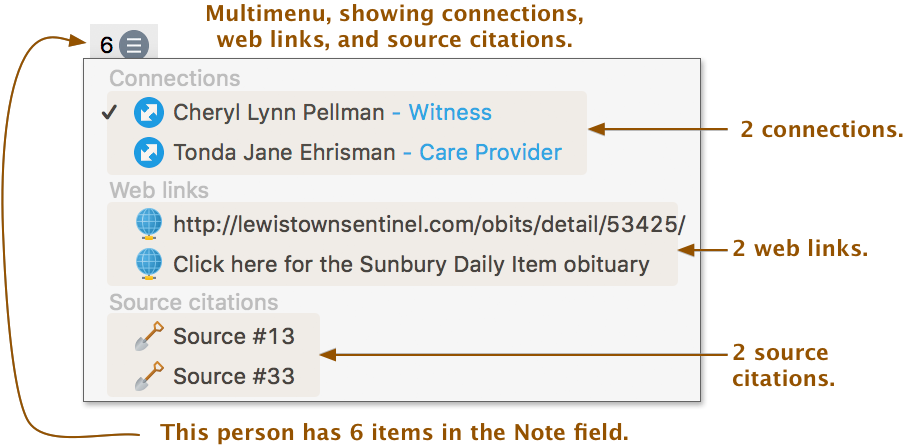
- In charts, the new Text Mode menu offers much greater ability to control and customize the appearance of text in chart boxes. For example, it's easy to have Reunion make bold the name of the descendant AND spouse in ALL descendant chart boxes. Reunion 13 keeps track of the different categories of text in all chart boxes, and each category can have its own text color, size, and style. Categories include: surnames, full names, the entire name line, the entire entry for a person (including any fields associated with a person), direct descendants/ancestors, spouses, and other attributes like relationship, sex, child status, etc.
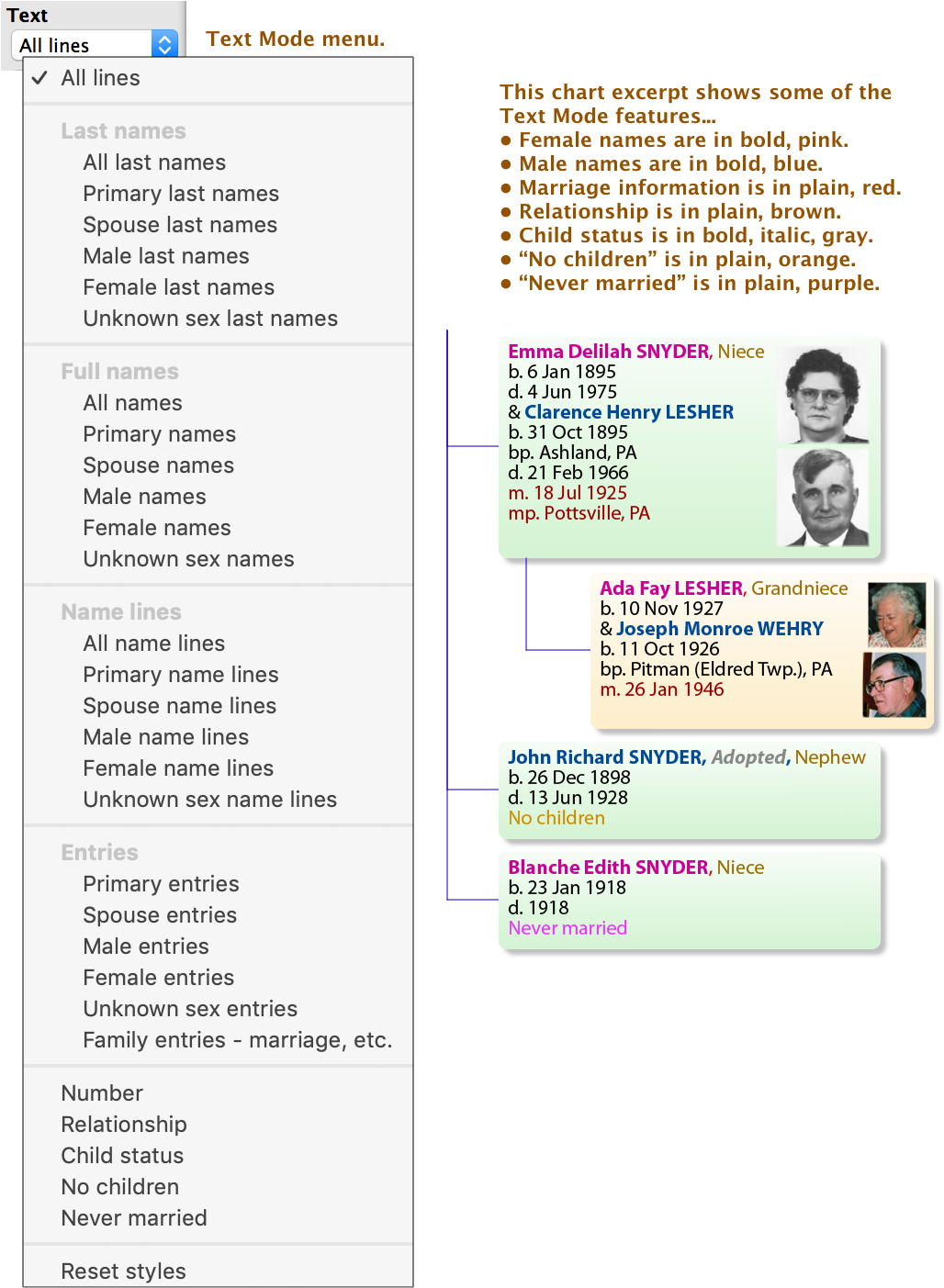
- Reunion 13 has a new feature to sort marriages. This appears in a new panel for globally sorting events, marriages, and children. This also adds new, automatic marking options when sorting events, marriages, and children and makes it easier to clean up data after importing a GEDCOM file.
- When the family view includes "Other spouses" or "Other children," those names can be clicked to navigate. This makes it easier to navigate to spouses or children from another marriage or family.

- The Logs button in the Navbar now lists the logs in the family file. This provides quicker access to see and edit a particular log, and also to navigate to web links or connections within the log itself.
- The Last Names report has been changed to Names & Facts and has been improved with the ability to list and show usage of...
- Fact fields in the family file. This provides an easy way to see the distribution of different occupations, causes of death, eye colors, etc.
- Last names (this was the only option in Reunion 12).
- Words in the Last Name field.
- First/middle names. This makes it easy to see the popularity of different given names in your family file.
- Words in the First/Middle name field.
- Names in the People sidebar are grouped by surname, making it easier to see longer names in the sidebar. Each subtitled surname shows the number of people with the surname. This feature can be turned on/off.
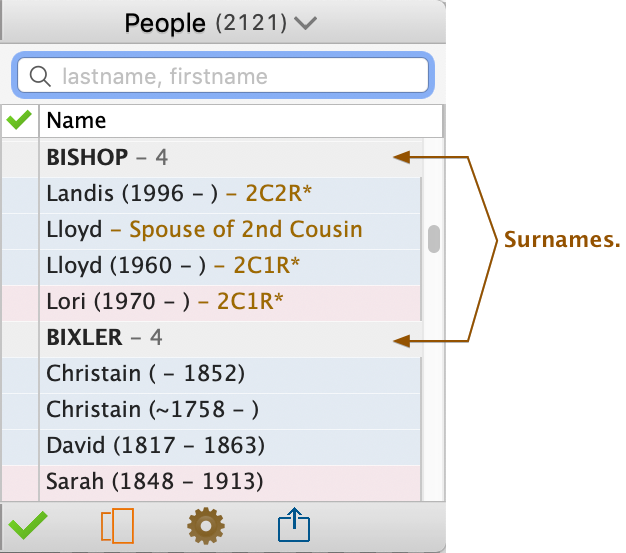
- The Autocomplete feature has been extended to cover first and middle names (aka "given names"). This should reduce your work, making it faster to enter common names. I.e., if you enter somebody named "William" you’ll never need to type it again.
- Child status can be included in chart boxes.
- Charts saved as graphic files (PNG, JPEG, or TIFF) have twice the resolution.
- The Edit Person panel now includes a green check mark button in the lower-right corner to mark/unmark a person, and to let you know if somebody is marked while you're editing.
- URLs appearing in books have a new option to enable/disable colored text and/or underlining. This provides a simple way to control the appearance of URLs in books you intend to print.
- The Bookmarks limit was increased to 500 people (formerly this was 200).
- The Citations list can be shared as a text report.
- Dates, places and memos can be edited directly in the List > Events window. Changes made to events in the family file will be actively reflected in the List > Events window while it is open. These new features will make it easier to tidy-up event data in your family file.
- The List window includes the name of its associated family file, in the bottom-right corner, so you know at a glance which family file the List window belongs to.
- The age of living people can be omitted from charts and reports. By omitting ages for living people, charts have a longer "shelf life," so to speak. I.e., they won't appear inaccurate when viewed years after they were created.
- New option to include/exclude places from charts and reports. This new option makes it much easier to remove places from charts (and thereby limit the size of chart boxes) while retaining all other flexibility.
- The Statistics report has a new “Date” option (in the Show menu) that shows how many people were born, died, or married on every single day of the year. It's easy to see, for example, the most popular wedding day of the year.
- The Calendar sidebar has a new "Same" feature that creates lists of people having an event on the same day, "day & month," or "day, month, and year."
- In charts, different types of connecting lines can be edited independently via the Tree > Lines menu item. Applying a change to one type of line in a chart won't overwrite any manual edits to another type of line.
- Control-clicking on the names near the top of the Edit Person and Edit Family windows will show a menu with options to copy text details into to the Clipboard.
- In the Statistics and Names & Facts reports, graphic bars representing percentage-of-total are overlaid in the key column of the report.
- The Media window has a new shortcut: double-click an image to open it in Apple's Preview app, making it easier for zooming.
- When a person is designated as "Never Married" or a couple is designated as having "No Children," those designations will appear inside chart boxes. This feature should help you (or others who review your charts) to know where there are legitimate "dead ends" in charts. I.e., to know that a particular line has been evaluated and ended without direct heirs.
- In the Mark panel, you can now mark the "male descendant line" (to reflect the passing of the Y-DNA from father to son) or "female descendant line" (to reflect the passing of mtDNA from mother to children of either sex).
- Several new capabilities have been added to the Advanced Find feature...
- Days born before marriage (compares a person’s birth date to his parents’ marriage date).
Example: to find people who were born before their parents were married.
- Days born after marriage (compares a person’s birth date to his parents’ marriage date). Examples: to find children born after the parents were married for 20 years; to find children born within a month after the parents were married.
- New operator: Contains Word. This provides a more precise way to search in some fields, particularly the First/mid Name field. Example: when you're looking for somebody named "Dan" but you don't want to see people whose name is "Daniel."
- Spouse has same last name. Example: to find couples where the husband and wife have the same surname.
- Number of days between death. Example: to find couples who died on the same day, or who died within a week of each other, or within a year of each other, etc.
- Living Date. Examples: to find people who were alive on a given date, were not alive during a certain year, alive before a certain year, a list of ancestors who were alive between 1640 and 1650, etc.
- Personal Statistics. Examples: to find (for each person) the number of step children, number of descendants, number of descendant generations, number of step parents, number of ancestors, number of ancestor generations, number of step siblings.
- New option in the Mark panel to take whatever group of people is currently marked and then mark one more generation of ancestors and/or descendants. I.e., mark the parents and/or children of people who are already marked.
- Birth date, death date, and age are included at the top of the Edit Person window (in addition to name).
- When searching source records, a new "does not contain" search method has been added.
- Reunion's date feasibility checker now includes the option to check for death after burial. This happens in real time (as death or burial events are entered/edited) and also when clicking the Show Feasibility Report button (in the Date Preferences > Feasibility Checking window).
-
Autocomplete for first, middle, and last names are updated in 3 new places: whenever names are added/edited in the Edit Family > Children panel, in ReunionTouch, and when using letter-key shortcuts to add people.
New features in earlier major releases of Reunion...
New Features in Reunion 12
New Features in Reunion 11
New Features in Reunion 10
New Features in Reunion 9

















